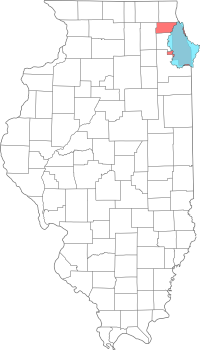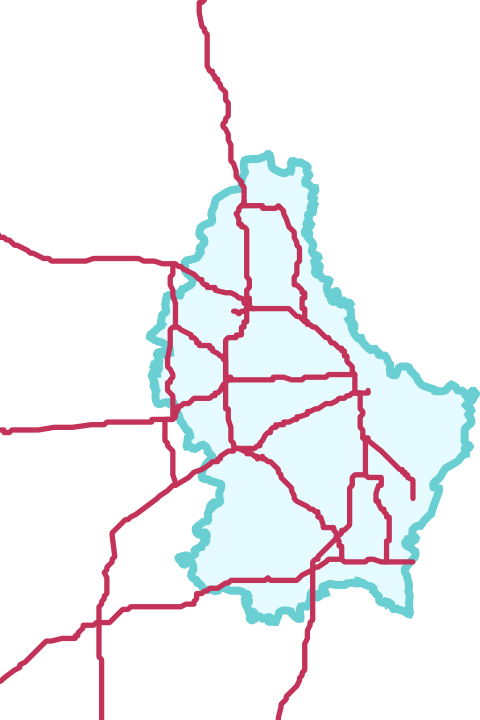The most enduring attraction of this blog appears to be one of our early posts, the one about the size of Ireland. (I suspect that it is particularly popular with young students looking to borrow some ideas for a school report.)
The Bugle staff are working on a sequel to that post, with the working title, Luxembourg: Put It in Your Pocket and Take It with You. Today, we offer you an early look at our contribution to the fascinating world of comparative geography.
 We chose to compare Luxembourg with Cook County Illinois, since they are very close in total area:
We chose to compare Luxembourg with Cook County Illinois, since they are very close in total area:
- 2240 square kilometers: Cook County
- 2586 square kilometers: Luxembourg
After experimenting with some alternative illustrations, we think a simple overlay works best. (Click on any image in this post to see a larger version.)
Residents of northeastern Illinois might find the following illustration helpful, too. It’s what the Chicagoland highway system would look like, superimposed on Luxembourg. We’re neglecting the hills and valleys of Luxembourg, of course, but this might give you a rough idea of the size of the country.

For cartophiles — Luxembourg City would be around Alsip, along I-294 northwest of its crossing with I-57. Also, the top of the image corresponds the Wisconsin border (roughly, as always).
We’re not finished with this project, so if you have any requests or ideas regarding the size of Luxembourg, please feel free to comment — all (positive) suggestions are welcome!
5 Comments to “Preview: How big is Luxembourg?”
17 September 2009
good show ol chap!!
22 September 2009
Will – You forgot to mention that per square kilometer (or mile, depending on where you are from!) Luxembourg has more limestone aquifers and oolithic limestone formations than Ohio (but fewer than the UK and Ireland interestingly enough), and a greater abundance of pre-Holicene shale beds than the whole of Idaho and Missouri put together. Quite amazing for such a small country. I think it’s also near the top of the “Human Development Index”. Had you mentioned these things, you really would have got my “geography geek” juices flowing.
25 September 2009
Thanks for the suggestion — this is just a preview. But why the focus on shale and limestone?
You may be confusing geography with geology. Still, expanding our coverage into comparative natural resources might be just ducky.
26 September 2009
Will, I have a degree in both (masters in geology) so don’t really get confused on these issues. Geography is such a wide subject (both human and physical), and further you could construe any comparison of land area and the occurrence of a phenomenon to be geographical in scope. The limestone point was just one which stood out as being noteworthy.
Keep up the good work. I like this kind of comparison.
Ed
25 October 2009
So how does Luxembourg rank in the list of the world’s smallest countries?